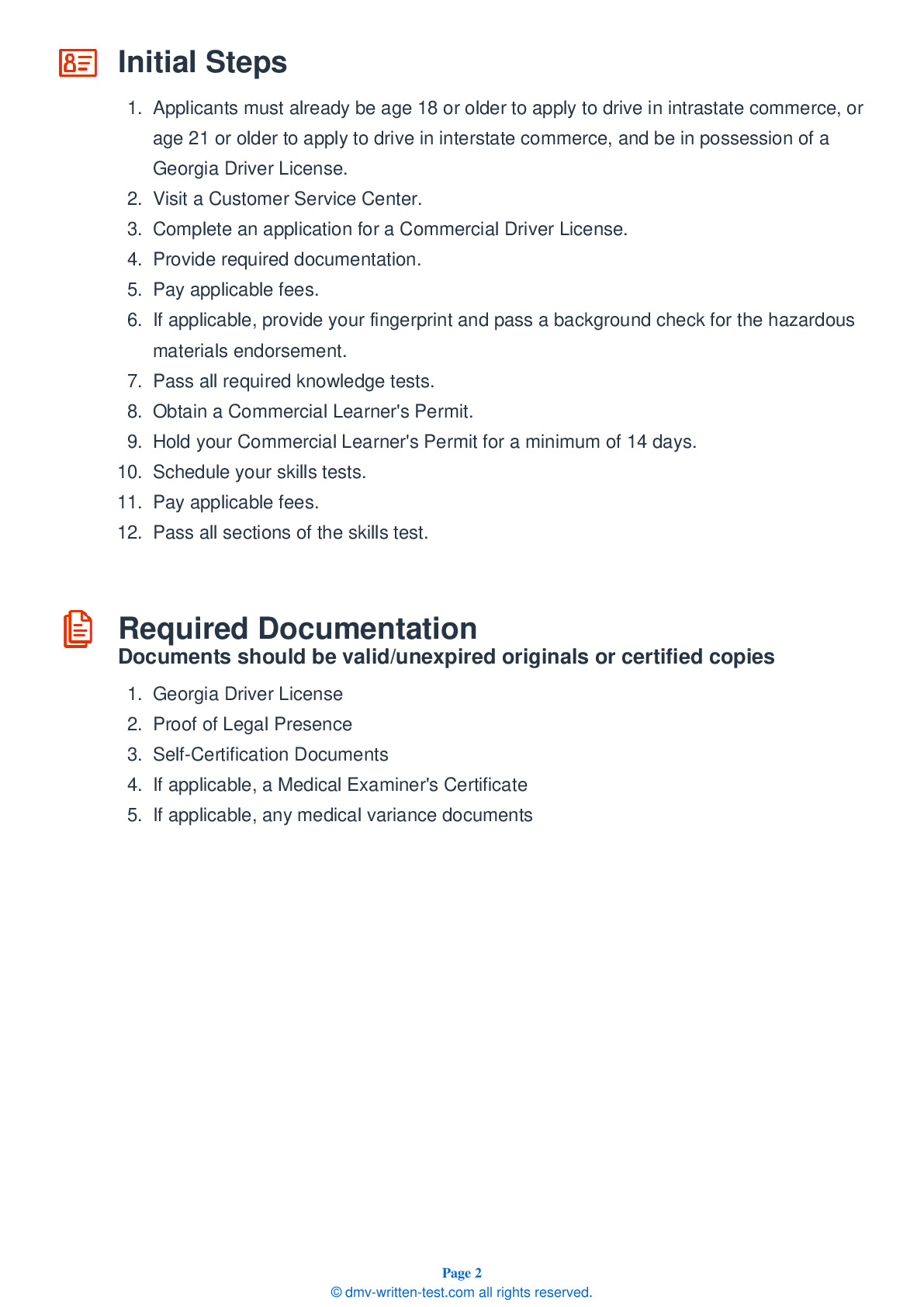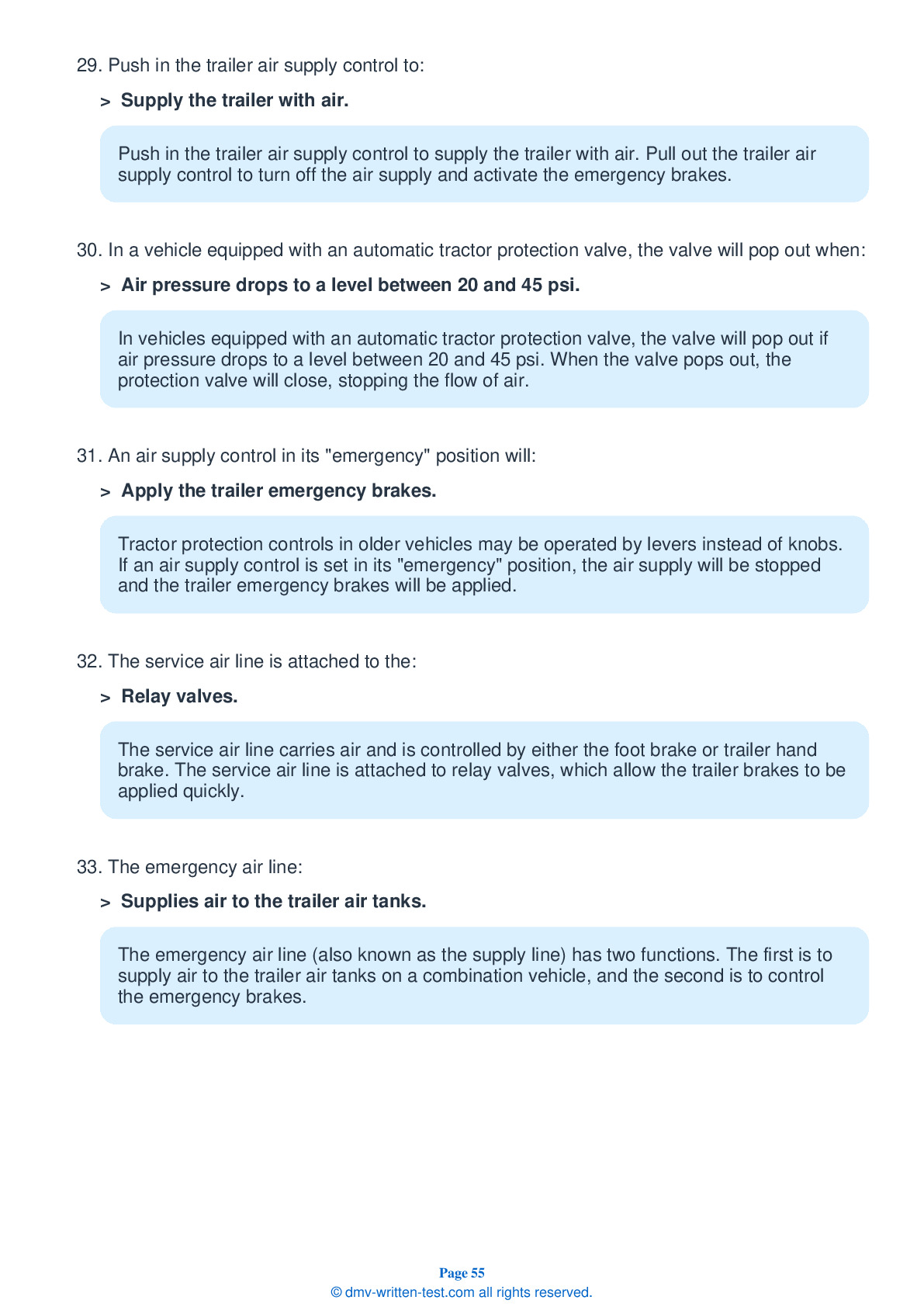Air Brakes
This endorsement is required for driving a vehicle with air brakes. To receive this endorsement, applicants must pass a written test. The test consists of 25 multiple choice questions. To pass, the applicant must answer at least 20 questions correctly. Test questions come from the Georgia Commercial Driver’s Manual. Questions come from chapter covering: Air Brakes. The Air Brakes endorsement may be used with the Class A, B or C CDL.
Number of Question
Passing Score
7. Spring brakes come on:
Explanation
Spring brakes come on automatically when air pressure drops to an unsafe psi level. Instead of waiting for the spring brakes to automatically activate, you should safely exit the road as soon as you notice the low pressure warning signal and bring your vehicle to a stop while you are still able to control the brakes.
8. An air brake-equipped vehicle traveling at a speed of 55 mph under ideal driving conditions will need approximately ____ to come to a complete stop.
Explanation
A vehicle's total stopping distance is made up of perception distance, reaction distance, brake lag distance, and braking distance. With all of these factors included, an air brake-equipped vehicle traveling at a speed of 55 mph under ideal driving conditions will need approximately 450 feet to come to a complete stop.
9. During an applied leakage test, the maximum leakage rate for a single vehicle with air brakes is:
Explanation
It is important to know the maximum air loss rate that is safe for your specific vehicle. A single vehicle with air brakes should have a leakage rate no higher than 3 psi in a minute during an applied leakage test.
10. Test the low pressure warning signal:
Explanation
It is essential that your low pressure warning light function properly. After allowing the system to charge, you can test the warning signal by rapidly applying and releasing the brake pedal. This will release air from the braking system and the warning signal should come on when pressure drops to a dangerous level.
11. Dollies equipped with ABS are required to have malfunction lamps located where?
Explanation
A dolly equipped with an Anti-Lock Braking System (ABS) is required to have a yellow malfunction lamp located on its left side.
12. The most common type of foundation brake used is the:
Explanation




